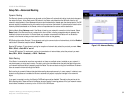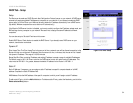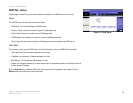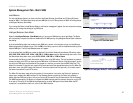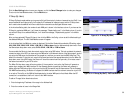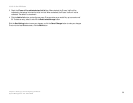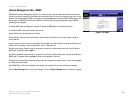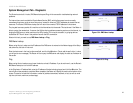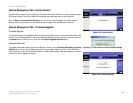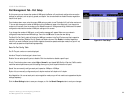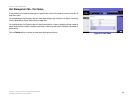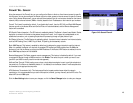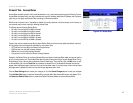
40
Chapter 6: Setting up and Configuring the Router
System Management Tab - SNMP
10/100 16-Port VPN Router
System Management Tab - SNMP
SNMP, Simple Network Management Protocol, is a network protocol that provides network administrators with
the ability to monitor the status of the Router and receive notification of any critical events as they occur on the
network. The Router supports SNMP v1/v2c and all relevant Management Information Base II (MIBII) groups. The
Router replies to SNMP Get commands for MIBII via any LAN (local) interface and supports a custom MIB for
generating trap messages.
To enable SNMP, keep the Enable box checked. To disable the SNMP agent, remove the checkmark.
To configure SNMP, complete all fields on this screen.
System Name. Enter the hostname of the Router.
System Contact. Enter the name of the network administrator for the Router, as well as a contact number or
e-mail address.
System Location. Enter the location of the Router. For example, you could include the name of the building, floor
number, and room location, such as Head Office - Floor 5 - Networking 3.
Get Community Name. Create a name for the group or community of administrators who can view the Router’s
SNMP data. The default name is public.
Set Community Name. Create a name for the group or community of administrators who can receive the Router’s
SNMP traps. The default name is private. A name must be entered in this field.
Trap Community Name. Enter the password required by the remote host computer that will receive trap messages
or notices sent by the Router.
Send SNMP Trap to. Enter the IP address of the remote host computer that will receive the trap messages.
Click the Save Settings button to save your changes, or click the Cancel Changes button to undo your changes.
Figure 6-33: SNMP



